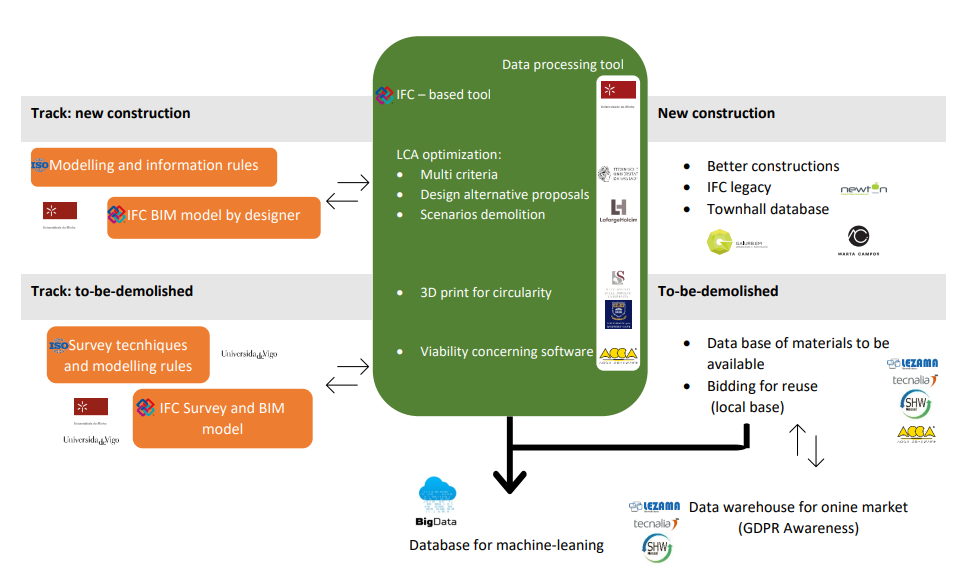PROJECT OVERVIEW

Who we are:
The RecyleBIM project is a Consortium of an international and multi-disciplinary team to develop strategies that use the new methods of collect and analyse Building information to develop tools for enhance the circularity of construction materials. With that purpose the Team is composed by different professionals of many institutions that are specialized in different areas of (des)construction techniques, data collecting, processing and digital information analyses that will allow new methodologies of material survey, analyse and transformation to develop the circularity of raw materials in the construction.
What we do:
RecycleBIM reflects an intention to create a framework for the circularity of raw building materials through the availability and integration of information in BIM (Building Information Modelling) technologies. This development focuses mainly on some key aspects, on the one hand the development of new methodologies for surveying buildings to be demolished based on manual scanning, controlling the costs of creating digital models of them. On the other hand, to establish BIM modelling rules that allow deconstruction to be analysed not only in terms of health and safety, but also of the deconstruction process and the materials it will generate and the creation of IFC tools and a platform for optimization of deconstruction strategies and "Life Cycle Analysis and Life Cycle Costing". These data are integrated with the use of concrete demolition waste for 3D printing and finally integrate these tools for use by municipalities in the management processes of new construction and demolition, keeping track of data about the circularity of materials at the local level.
METHODOLOGY AND WORK PACKAGES
-
The research methodology is strongly anchored in the complementarity of know-how and geographical
reach of the partners of the project.